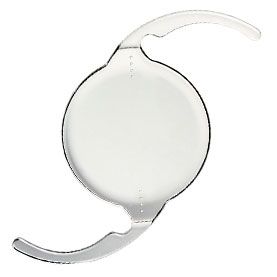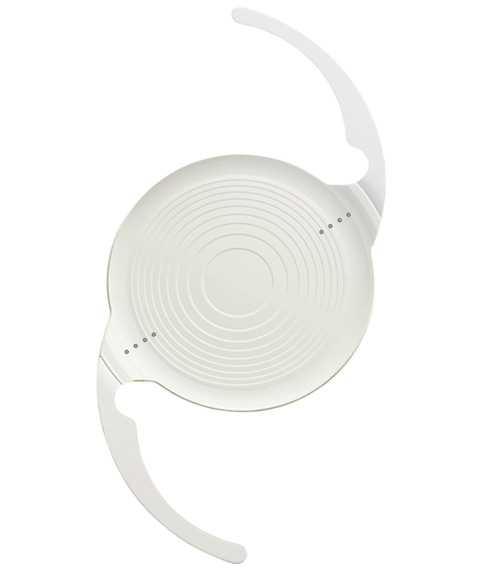
In a normal eye, the lens is clear. In an eye that has a cataract, the lens has become cloudy or tinted. It is like a window that has become fogged with steam. The development of a cataract is usually age related. However, there are other reasons cataracts develop. For instance, long term medication use, medical problems such as diabetes, an injury to the eye, or long term unprotected exposure to the sun. These can all preclude cataract development.
How Do You Know If You Have a Cataract?
When a person has a cataract, they can experience some or all of the following symptoms:
- Painless blurring of vision
- Light sensitivity or glare
- Frequent eyeglass prescription changes
- Double vision in one eye
- A need for brighter light to read
- Poor night vision
- Fading or yellowing of colors
A comprehensive eye examination by an eye care professional (ophthalmologist or optometrist) can detect the presence and extent of a cataract. There can also be reasons other than cataracts for worsened vision, including diseases of the cornea, retina or optic nerve. If another disease is present with a cataract, perfect vision may not be restored after cataract surgery. Cataract surgery involves removing the natural lens (that has become clouded) and replacing it with an artificial intraocular lens implant.
Lens Options
Toric Lens Implants
Toric lens implants are a sophisticated technology for patients who have astigmatism. Astigmatism is a common focusing problem in which the cornea is shaped more like a football, than perfectly round like a basketball. Most patients with astigmatism depend on glasses or contact lenses to see clearly.
Traditional lens implants can correct for nearsightedness or farsightedness, however, they do not correct for astigmatism. A toric implant may offer a clearer image than a standard monofocal implant in individuals with astigmatism, with the potential to diminish dependence on glasses or contact lenses at a given focus distance. Toric implants are comprised of the same material and have the same excellent safety record as traditional implants. The surgery is performed generally the same way as any standard lens implants; with the exception that special attention is paid to the orientation of the implant to treat the astigmatism.
Tecnis® Symfony IOL
The Tecnis® Symfony Extended Range of Vision IOL is the first and only premium intraocular lens that corrects presbyopia for patients with or without an astigmatism. It uses cutting edge technology to lengthen the focus of the eye in order to provide quality continuous vision so patients can see clearly at near, intermediate, and far distances. The Tecnis® Symfony also corrects color distortion allowing for high quality vision in any lighting condition. This means that patients can see clearly from day to night. Unlike some other lenses, the Tecnis® Symfony lens has a low incidence of halo and glare.
According to a recent study, 97% of patients would elect to have the Tecnis® Symfony implanted again. The Tecnis® Symfony is approved for use in over 50 countries and has been studied in over 2,000 surgeries during its clinical trials. If you are considering cataract surgery, ask your doctor if the Tecnis® Symfony is the right choice for you.
The Vivity IOL
The Vivity IOL is a non-diffractive extended depth of focus (EDOF) IOL. It is the first and only FDA-approved IOL of its kind. A feature in the lens called X-WAVE Technology makes it non-diffractive. It also creates disturbance-free vision. Multifocal IOLs have refractive zones built into the lens. They help you see at two distances, unlike a monofocal IOL. But these zones also cause problems. They create disturbances in your vision as you transition between refractive zones. The zones split light that enters your eye to focus it at multiple distances. This splitting causes a disturbance between refractive distances.
X-WAVE Technology does not split the light entering your eye. Instead, it stretches and shifts it, which makes transitions smooth and disturbance-free. The Vivity IOL can significantly reduce or end your need for glasses and give you disturbance-free vision. You may need glasses to read fine print like on a prescription bottle, but that should be it.
PanOptix Trifocal IOL
The PanOptix trifocal IOL is the first and only FDA-approved trifocal IOL. It has three refractive zones built into the lens instead of two like other multifocal IOLs. The third refractive zone eliminates common side effects of multifocal IOLs. It eliminates glare and halos and gets rid of disturbances between distances.
The intermediate zone also gives you excellent vision at all three refractive distances. You can transition without disturbances between far, intermediate, and near vision. That is why the PanOptix trifocal IOL can end your need for glasses. If freedom from glasses sounds good, the PanOptix trifocal IOL may be suitable for you.
Are cataracts affecting your vision? Schedule a consultation at Turlock Eye Physicians in Turlock, CA, to learn more about cataract surgery!



